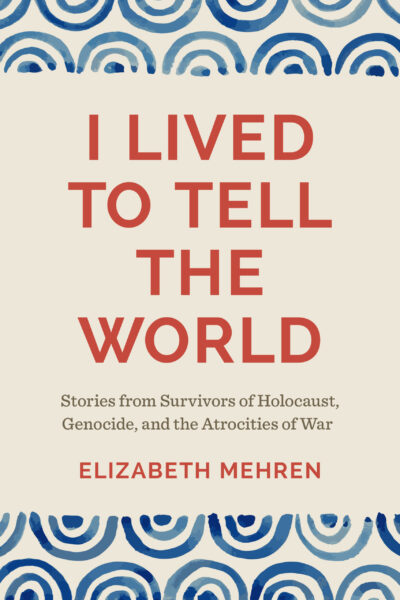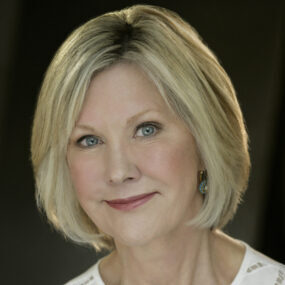EDITOR’S NOTE: This is our final dispatch from the 2024 Power of Narrative conference. For earlier posts, see deadline narratives by a Wall Street Journal podcast team, the braided structure used by The Atavist for complex stories, practical tips on empathy as a reporting tool and John Woodrow Cox on interviewing children about gun violence.
To write “I Lived to Tell the World,” a book of profiles of survivors of mass casualties such as the Holocaust and Rwandan genocide, Oregon-based writer Elizabeth Mehren collected an overwhelming amount of information. She had hours of audio recordings, video recordings, notes and interview transcripts from the 16 survivors she profiled. She had interviews with regional experts for historical context and countless academic articles on each of the mass casualties she covered.

Another journalist might be overwhelmed by that amount of research and the sheer length of the project. But Mehren — a former professor of journalism at Boston University’s College of Communication, Los Angeles Times New England bureau chief and Washington Post editor and author of four previous books — developed a process that works. In a session at the 2024 Power of Narrative conference at Boston University, she shared how she learned to turn all of this “stuff” (her own word) into a compelling narrative.
Start where the story starts
Mehren’s process began from the very first question of each first interview with a source. She knew that eventually she was going to build a timeline, so her first question aimed to determine where the story began. She asked about the person’s childhood or their everyday life before the crucible events. Even with the two Holocaust survivors she interviewed, who experienced anti-Semitism in their pre-Holocaust childhoods, there was a period that was normal before things escalated, she said.
Because of the importance of chronology, she asked a lot of “when” questions. When was your father taken away? Was it day or night?
Transcribe and cross-reference your notes
Mehren has several ways of keeping her material in mind as she researches. She transcribes her interviews. “It’s a really tedious process, but it works,” she said. She also meticulously cross-referenced all of her files.
For the book, she not only cross-referenced background material about the culture and politics of each region, but also her interview notes. This helped her avoid redundancy while interviewing and writing about several people from Bosnia and several from Cambodia, for example. Papers, such as photos and scraps with thoughts and insights went into a shoe box.
Create a timeline
Mehren had one main tip for turning a load of research into a narrative. “If you have this pile of abstract stuff,” Mehren said, “create a timeline. Chronology helps us organize things. I think it’s something our brain likes to have.”
That doesn’t mean you have to tell the story in chronological order, she said. You might want to start in the middle, then go back to the beginning. However, organizing your narrative starts with knowing the order of events.
Build around a central focus
While sifting through all the information she gathered, Mehren asked herself “the big, cosmic question: What is this about?” Any information that didn’t fit the focus wasn’t included.
Collaborate for accuracy, authenticity and morality
Finally, for Mehren, a story doesn’t just have a beginning, middle and end. “A good story engages us cognitively, emotionally, politically, ethically, ideologically and morally,” she said. “It helps readers connect with facts that can be confusing, and in my case, downright disturbing.”
To address the moral aspect of her work as an author, Mehren does something that as a reporter or a journalism professor she would have considered journalistic blasphemy: she collaborates with her sources. If anyone had suggested this when she was a journalism professor, she said, “I would have thrown something.”

Collaboration means her subjects get to review a draft of what she writes about them, and they get to correct any facts she may have misunderstood. They can’t change her writing or the conclusions she draws, but Mehren’s sources start the interviewing process knowing that they will see the result before anyone else does.
Even while telling these morally complex stories, Mehren believes it’s important to make sure storytelling doesn’t tip into advocacy. The difference, she said, is that advocates tell you what to think. A storyteller lets you draw your own conclusions.
Mehren used these techniques even at the very last moment of producing her widely-reviewed and praised book. After the book was written and edited, the publisher wanted to change the title, which had been “To Bear Witness,” from the Holocaust author Elie Wiesel quote carved into the entrance of the United States Holocaust Memorial Museum. Unfortunately, many other books had already used it, her publisher pointed out.
To find a new title, Mehren reviewed her materials, thinking about the book’s focus. She came across a statement from a survivor of the Rwandan genocide, who gave Mehren a philosophical reason why he survived while the rest of his family was killed: “I think I lived in order to tell the world.”
“And that became the title,” she said, “because I realized that was what these stories were about, telling the world.”
* * *
Madeline Bodin is a freelance environmental and science journalist based in Vermont.



